Abstract
1. Flosequinan (BTS 49 465, 7-fluoro-1-methyl-3-methylsulphinyl-4-quinolone) a novel arteriovenous dilator agent was orally effective in conscious renal hypertensive dogs and normotensive cats. The hypotensive potency of flosequinan was approximately ten times less than that of hydralazine in renal hypertensive dogs, 10 mg kg-1 and 20 mg kg-1 flosequinan causing similar falls in mean blood pressure to 1 mg kg-1 and 3 mg kg-1 hydralazine respectively. In normotensive cats, 5 mg kg-1 flosequinan caused similar falls to 0.5 and 1.0 mg kg-1 hydralazine. The onset of hypotensive effect after flosequinan appeared to be slightly slower than after hydralazine in the dog and slightly faster than hydralazine in the cat. 2. The degree of tachycardia and increase in plasma renin activity (PRA) for equivalent falls in mean blood pressure in both species was significantly less for flosequinan than for hydralazine (P less than 0.05). 3. In normotensive dogs, flosequinan, 10 and 20 mg kg-1 orally, caused a small but non-significant increase in sodium and chloride excretion and had little effect on urine volume whereas hydralazine, 1 and 3 mg kg-1 orally, caused a marked retention of sodium and chloride ions and a reduction in urine volume (P less than 0.01). 4. Neither flosequinan, 10 mg kg-1 orally, nor hydralazine 1 mg kg-1 orally, affected either glomerular filtration rate measured as creatinine clearance or effective renal plasma flow measured as p-aminohippuric acid clearance in normotensive dogs. 5. The lesser degree of tachycardia and increase in plasma renin activity together with a lack of sodium retaining activity associated with flosequinan suggest that this agent may have potential advantages over existing therapy as an antihypertensive in man.
Full text
PDF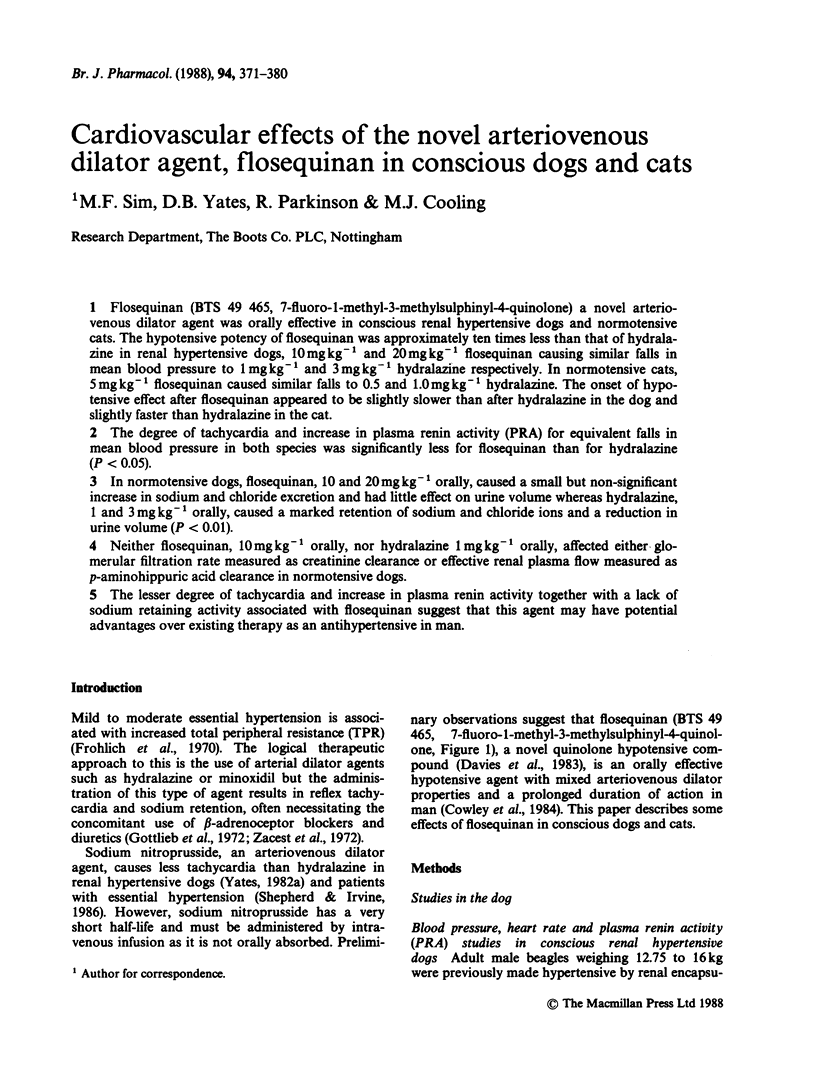
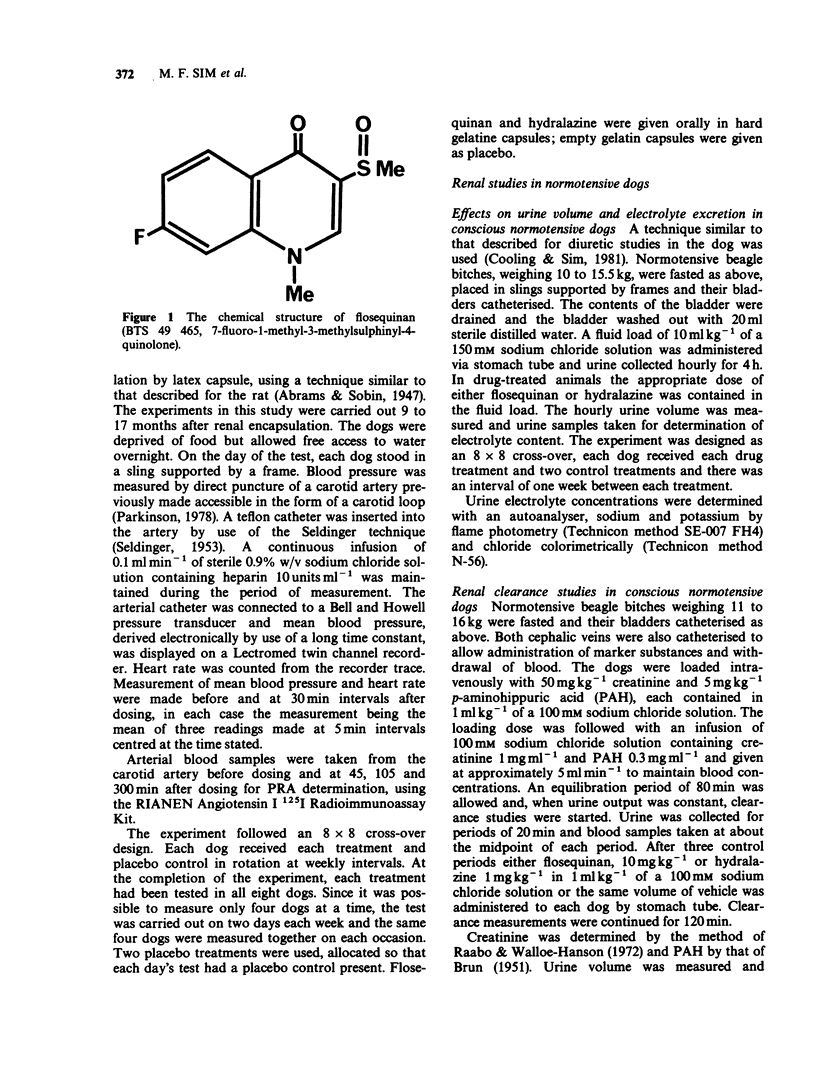
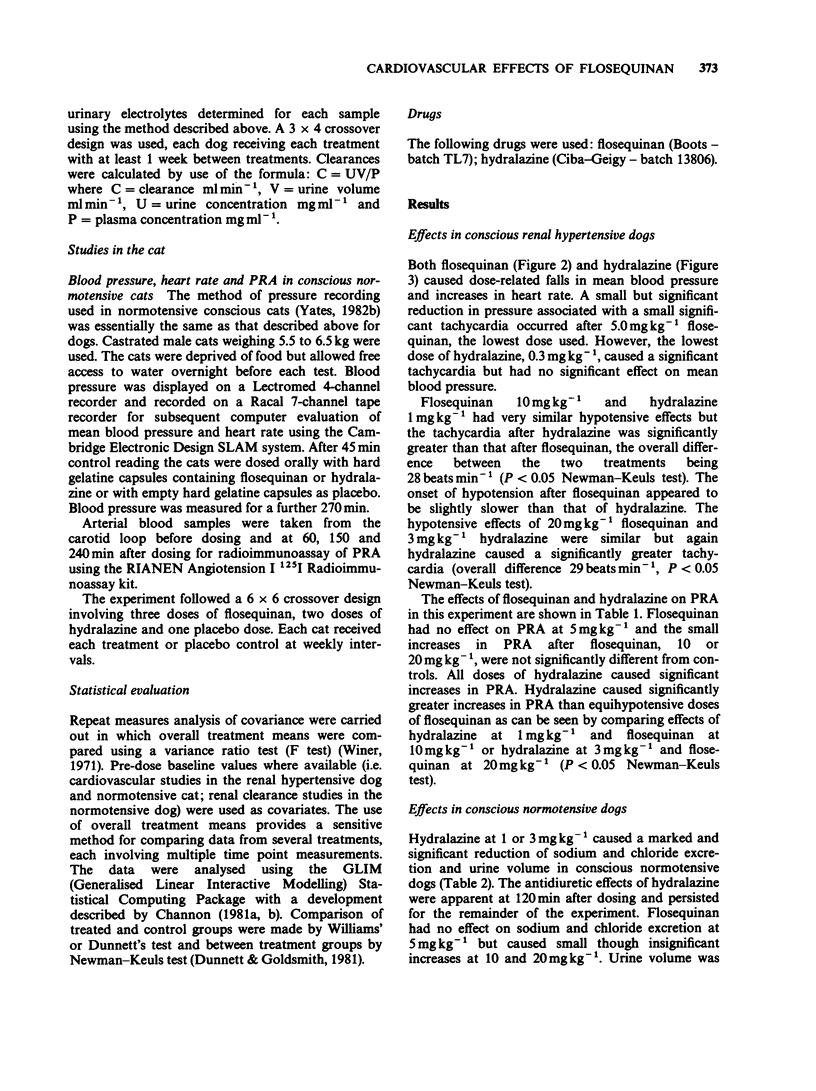
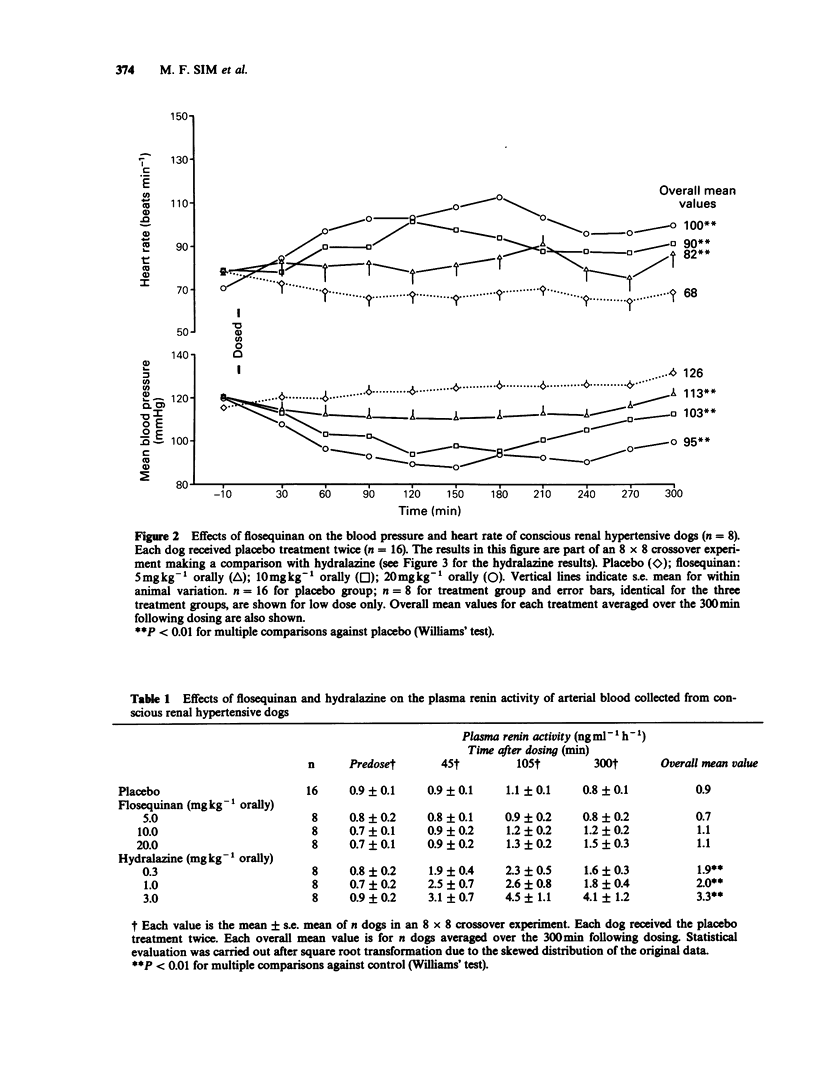
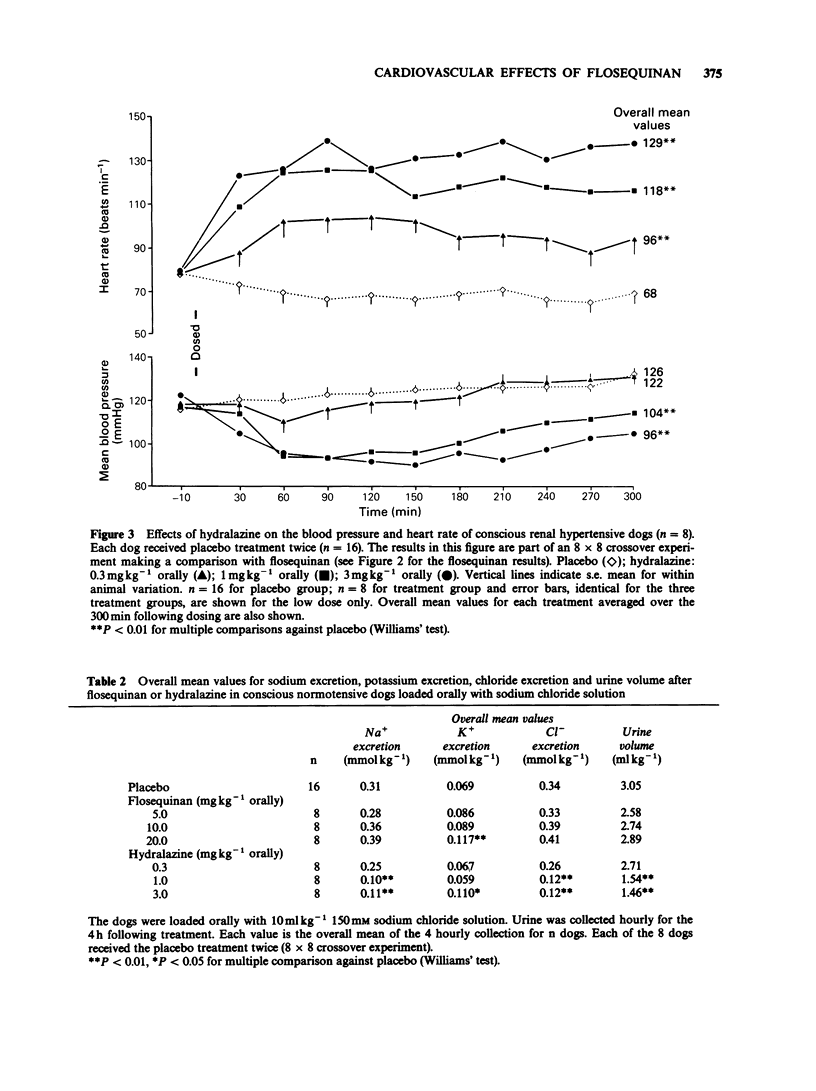
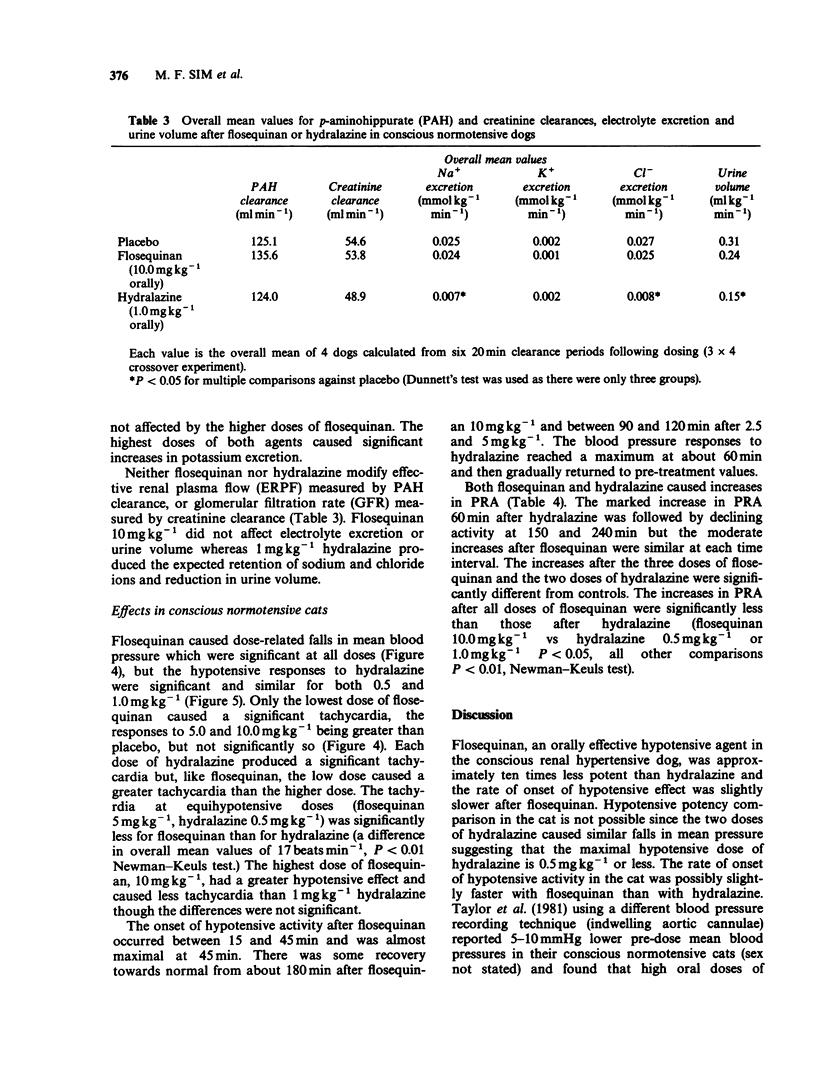
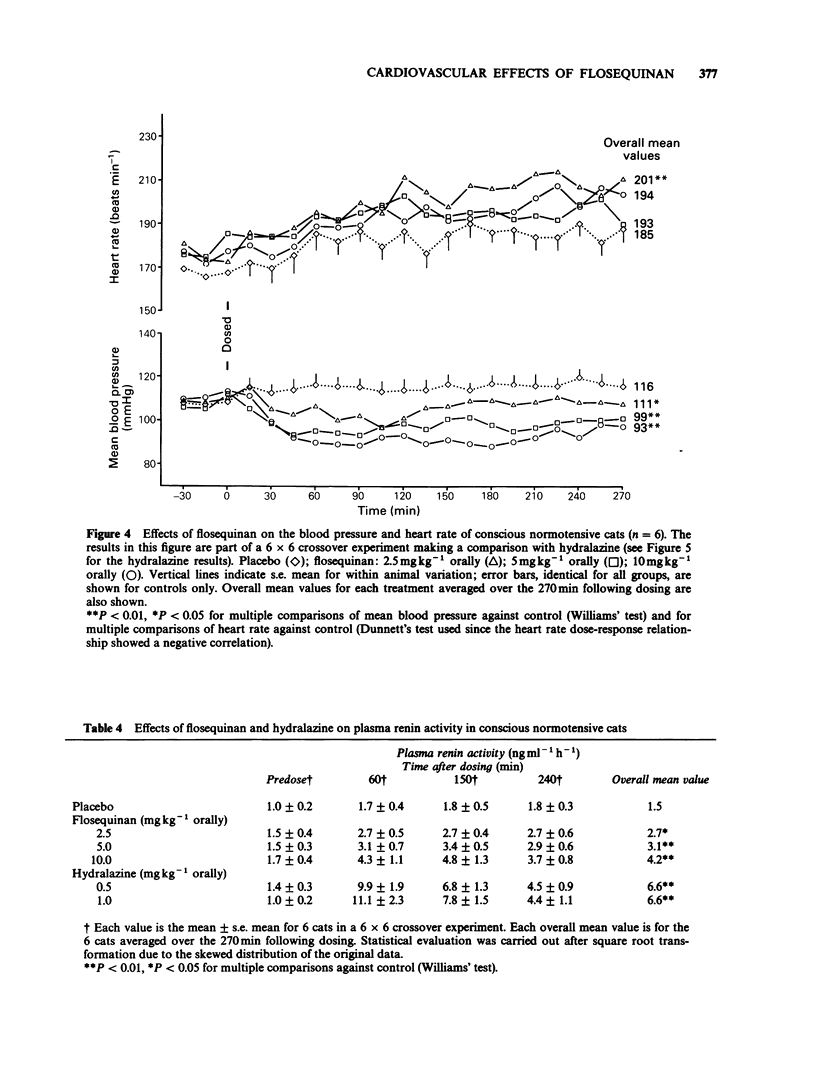
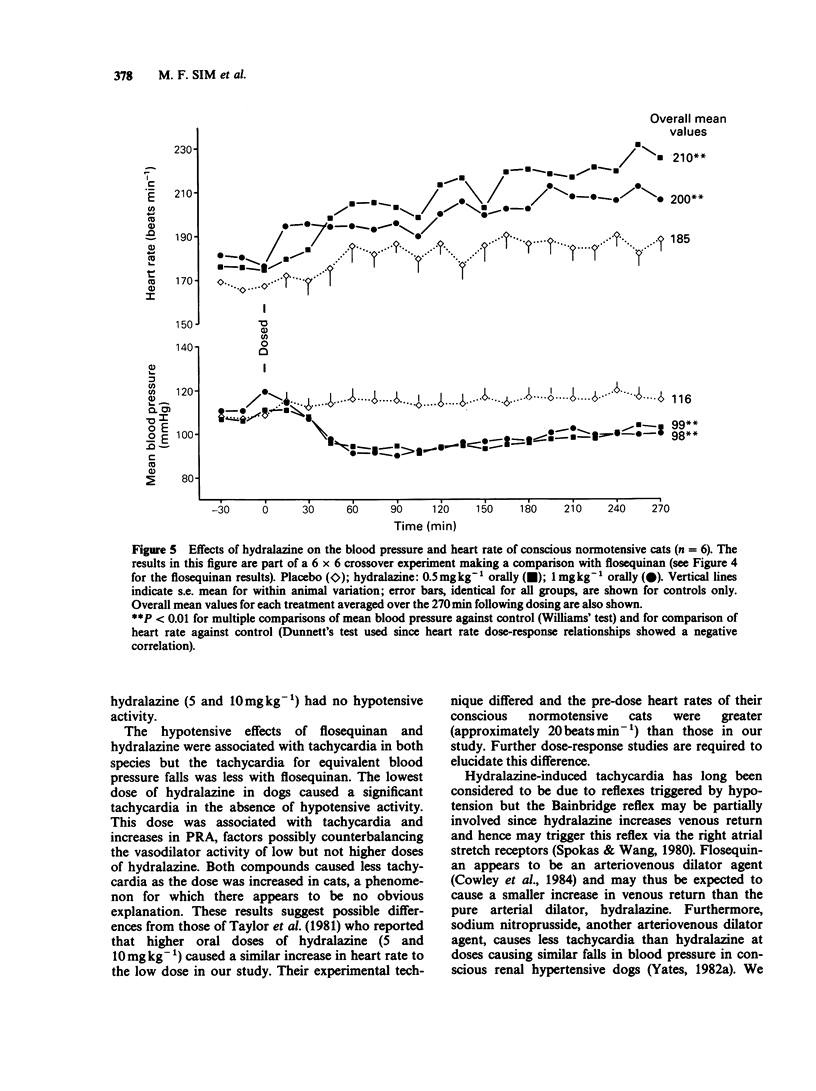
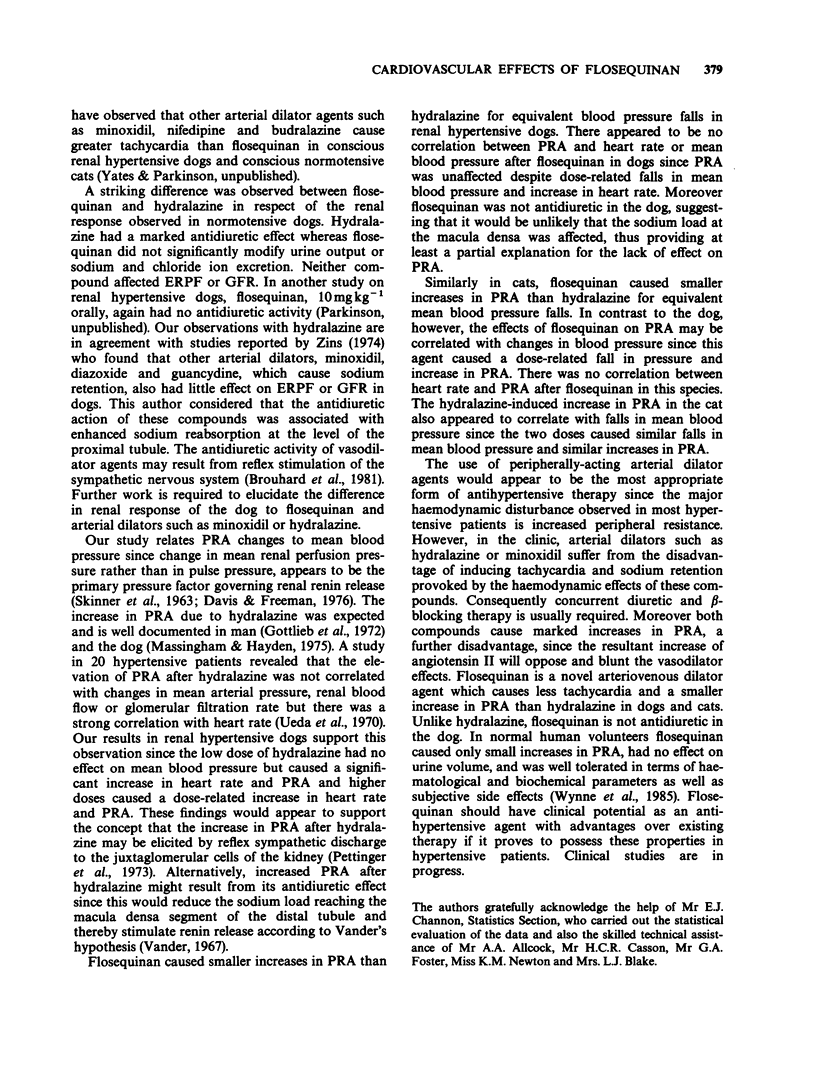
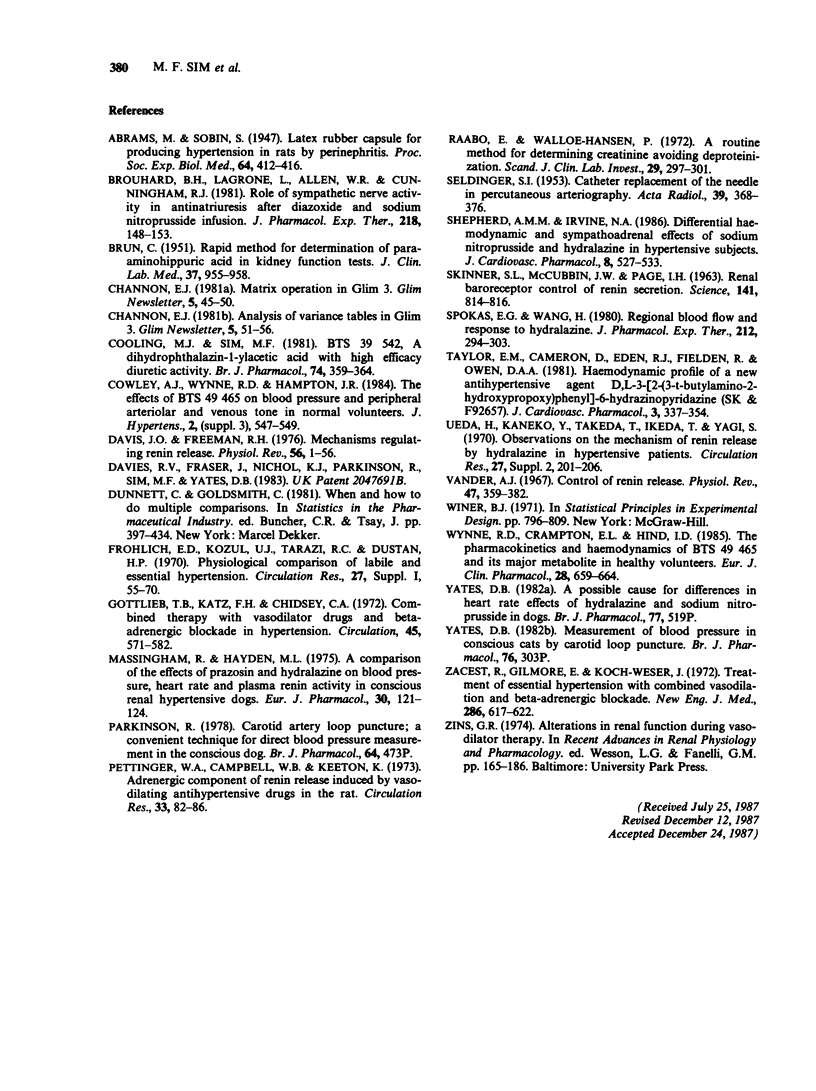
Selected References
These references are in PubMed. This may not be the complete list of references from this article.
- BRUN C. A rapid method for the determination of para-aminohippuric acid in kidney function tests. J Lab Clin Med. 1951 Jun;37(6):955–958. [PubMed] [Google Scholar]
- Brouhard B. H., LaGrone L., Allen W. R., Cunningham R. J. Role of sympathetic nerve activity in antinatriuresis after diazoxide and sodium nitroprusside infusion. J Pharmacol Exp Ther. 1981 Jul;218(1):148–153. [PubMed] [Google Scholar]
- Cooling M. J., Sim M. F. BTS 39542, a dihydrophthalazin-1-ylacetic acid with high efficacy diuretic activity. Br J Pharmacol. 1981 Oct;74(2):359–364. doi: 10.1111/j.1476-5381.1981.tb09979.x. [DOI] [PMC free article] [PubMed] [Google Scholar]
- Davis J. O., Freeman R. H. Mechanisms regulating renin release. Physiol Rev. 1976 Jan;56(1):1–56. doi: 10.1152/physrev.1976.56.1.1. [DOI] [PubMed] [Google Scholar]
- Gottlieb T. B., Katz F. H., Chidsey C. A., 3rd Combined therapy with vasodilator drugs and beta-adrenergic blockade in hypertension. A comparative study of minoxidil and hydralazine. Circulation. 1972 Mar;45(3):571–582. doi: 10.1161/01.cir.45.3.571. [DOI] [PubMed] [Google Scholar]
- Massingham R., Hayden M. L. A comparsion of the effects of prazosin and hydrallazine on blood pressure, heart rate and plasma renin activity in conscious renal hypertensive dogs. Eur J Pharmacol. 1975 Jan;30(1):121–124. doi: 10.1016/0014-2999(75)90213-7. [DOI] [PubMed] [Google Scholar]
- Parkinson R., Sim M. F. Carotid artery loop puncture; a convenient technique for direct blood pressure measurement in the conscious dog [proceedings]. Br J Pharmacol. 1978 Nov;64(3):473P–473P. [PMC free article] [PubMed] [Google Scholar]
- Pettinger W. A., Campbell W. B., Keeton K. Adrenergic component of renin release induced by vasodilating antihypertensive drugs in the rat. Circ Res. 1973 Jul;33(1):82–86. doi: 10.1161/01.res.33.1.82. [DOI] [PubMed] [Google Scholar]
- Raabo E., Wallöe-Hansen P. A routine method for determining creatinine avoiding deproteinization. Scand J Clin Lab Invest. 1972 May;29(3):297–301. doi: 10.3109/00365517209080245. [DOI] [PubMed] [Google Scholar]
- SELDINGER S. I. Catheter replacement of the needle in percutaneous arteriography; a new technique. Acta radiol. 1953 May;39(5):368–376. doi: 10.3109/00016925309136722. [DOI] [PubMed] [Google Scholar]
- SKINNER S. L., MCCUBBIN J. W., PAGE I. H. RENAL BAROCEPTOR CONTROL OF RENIN SECRETION. Science. 1963 Aug 30;141(3583):814–816. doi: 10.1126/science.141.3583.814. [DOI] [PubMed] [Google Scholar]
- Shepherd A. M., Irvine N. A. Differential hemodynamic and sympathoadrenal effects of sodium nitroprusside and hydralazine in hypertensive subjects. J Cardiovasc Pharmacol. 1986 May-Jun;8(3):527–533. doi: 10.1097/00005344-198605000-00014. [DOI] [PubMed] [Google Scholar]
- Spokas E. G., Wang H. H. Regional blood flow and cardiac responses to hydralazine. J Pharmacol Exp Ther. 1980 Feb;212(2):294–303. [PubMed] [Google Scholar]
- Taylor E. M., Cameron D., Eden R. J., Fielden R., Owen D. A. Hemodynamic profile of a new antihypertensive agent D,L-3-[2-(3-t-butylamino-2-hydroxypropoxy)phenyl]-6-hydrazinopyridazine (SK&F 92657). J Cardiovasc Pharmacol. 1981 Mar-Apr;3(2):337–354. doi: 10.1097/00005344-198103000-00012. [DOI] [PubMed] [Google Scholar]
- Ueda H., Kaneko Y., Takeda T., Ikeda T., Yagi S. Observation on the mechanism of renin release by hydralazine in hypertensive patients. Circ Res. 1970 Oct;27(Suppl):201–206. [PubMed] [Google Scholar]
- Vander A. J. Control of renin release. Physiol Rev. 1967 Jul;47(3):359–382. doi: 10.1152/physrev.1967.47.3.359. [DOI] [PubMed] [Google Scholar]
- Wynne R. D., Crampton E. L., Hind I. D. The pharmacokinetics and haemodynamics of BTS 49 465 and its major metabolite in healthy volunteers. Eur J Clin Pharmacol. 1985;28(6):659–664. doi: 10.1007/BF00607911. [DOI] [PubMed] [Google Scholar]
- Zacest R., Gilmore E., Koch-Weser J. Treatment of essential hypertension with combined vasodilation and beta-adrenergic blockade. N Engl J Med. 1972 Mar 23;286(12):617–622. doi: 10.1056/NEJM197203232861201. [DOI] [PubMed] [Google Scholar]


